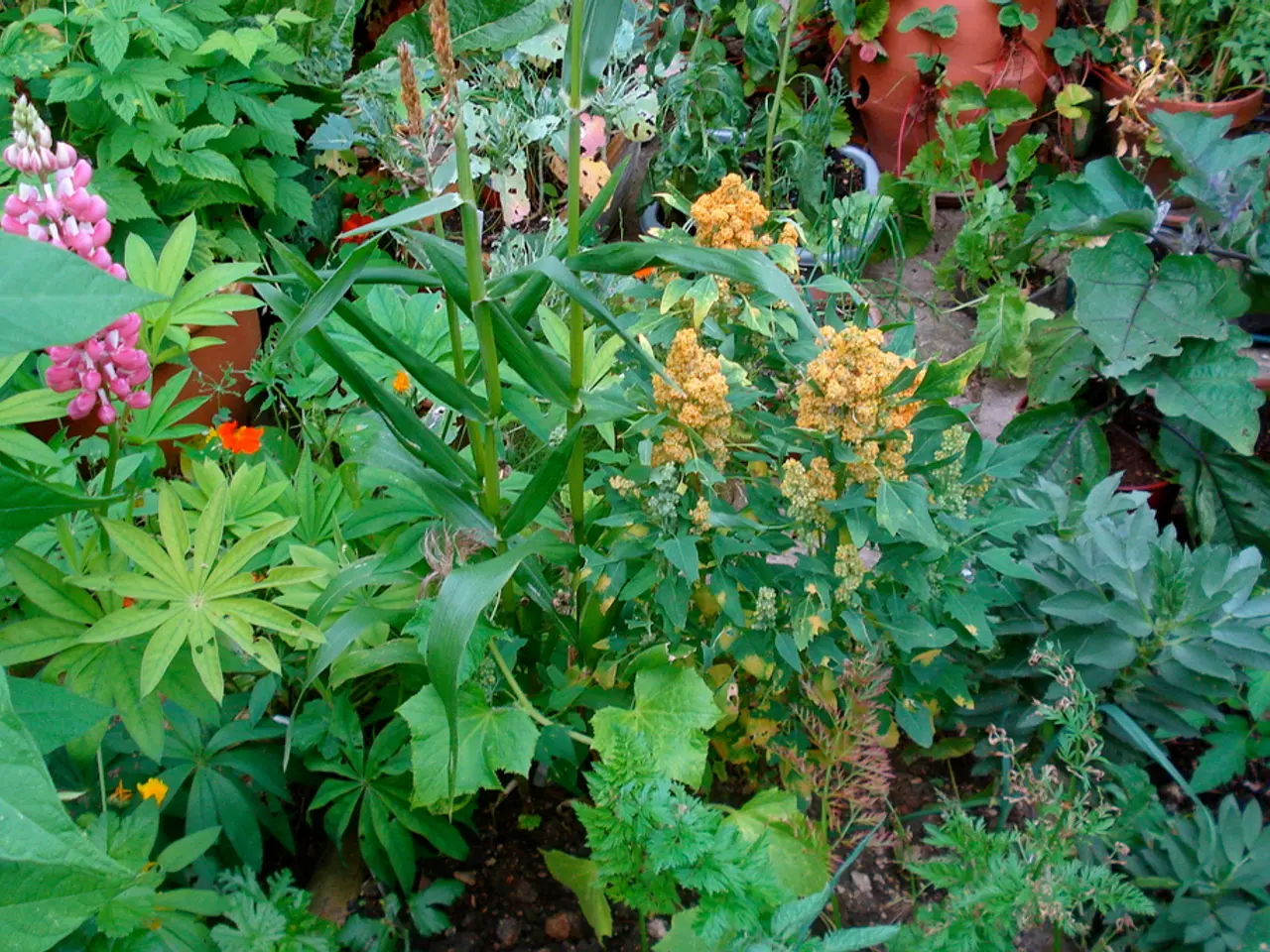Threatened oases: The importance of planning protection for small, green havens
In the heart of Germany's industrial past, the Ruhr region is transforming its urban landscape to meet the challenges of the 21st century. Allotment gardens, once significant living spaces, are now playing a pivotal role in this transformation, extending beyond their role as leisure and recreation facilities.
The ecological and social significance of allotment gardens is particularly pronounced in densely populated areas like the Ruhr region. These gardens contribute to climate protection through sustainable and natural design, providing habitats for insects and birds. They also serve as important climate compensation areas, fresh air corridors, and refuges for flora and fauna.
Moreover, allotment gardens in the Ruhr region are crucial components of the region's culture. They are important components of the Ruhr region's unique identity, and their importance extends beyond their role in leisure and recreation. Allotment gardens play a significant role in the education of children and young people about ecological processes and the growth of healthy fruit and vegetables.
Sonja Bongers, a member of the North Rhine-Westphalia State Parliament and the Chairperson of the SPD City Council fraction, is advocating for the updated development of allotment gardens in the Ruhr region. It is urgently necessary, she says, to develop or update allotment development concepts and secure the qualitative and quantitative goals in the land use and green space plans.
Cities in the Ruhr region are actively preserving green spaces as vital components of urban planning for both climate protection and cultural significance. They are integrating allotment gardens into larger green infrastructures and repurposing industrial spaces into multifunctional parks.
Key approaches include transforming former industrial areas into green urban oases, maintaining and expanding large landscape and botanical gardens, protecting municipal parks and forested areas within cities, and integrating allotment gardens into urban planning to balance development and green space.
For instance, Landschaftspark Duisburg-Nord, covering 180 hectares of former industrial land, has been ecologically reclaimed to include over 700 species of plants, walking and cycling paths, climbing gardens, and recreational areas. This transformation supports both biodiversity and climate adaptation while preserving cultural heritage linked to the region's industrial past.
Grugapark in Essen, originally developed from a 1929 exhibition, remains a vast park hosting rare plant species, leisure facilities, and event venues. Such parks provide ecosystem services like urban cooling and carbon sequestration, contributing to climate protection and community well-being.
In Bochum, mixed forests such as Weitmarer Holz and municipal parks, including botanical gardens affiliated with Ruhr University, support urban biodiversity and preserve cultural landscape continuity. Their protection is prioritized to preserve local climate moderation and the cultural identity connected to these green spaces.
However, the value of allotment gardens is often overlooked in urban planning. As cities in the Ruhr region continue to grow, leading to an increase in land prices, allotment gardens in city centers, along transport routes, or near commercial and industrial areas are under pressure for development land. Allotment associations are actively participating in climate protection efforts through their sustainable and natural garden designs, but the pressure to convert vacant land for profitable use is rising.
Despite these challenges, the importance of allotment gardens in the Ruhr region is undeniable. They are serving as valuable educational resources for children and young people, teaching them about ecological processes and the growth of healthy produce. Allotment associations are increasingly cooperating with schools and kindergartens, turning allotment and school gardens into extracurricular learning sites for children and young people.
In conclusion, the Ruhr region is preserving its green spaces as multifunctional assets that contribute to climate protection through biodiversity, cooling, and recreation, while also maintaining the cultural practices and historical identity tied to allotment gardening and urban green landscapes. This dual focus is reflected in landscape architecture approaches that optimize green space quality within urban boundaries, blending private gardens and public greens for social and environmental benefits. A growing emphasis on sustainable environmental and green criminology encourages local stewardship and reduces urban environmental degradation, supporting the longevity of green spaces.
- Environmental science and climate-change initiatives align with allotment gardens in the Ruhr region, as these gardens contribute to climate protection through sustainable and natural design, serving as important climate compensation areas.
- In the Ruhr region's urban landscape transformation, home-and-garden spaces, such as allotment gardens, are being integrated into larger green infrastructures, reproducing historical cultural values while adapting to modern environmental challenges.
- As lifestyle choices shift towards sustainability, allotment gardening in the Ruhr region has evolved from mere leisure activities to platforms for teaching ecological processes and healthy lifestyle practices to children and young people.







